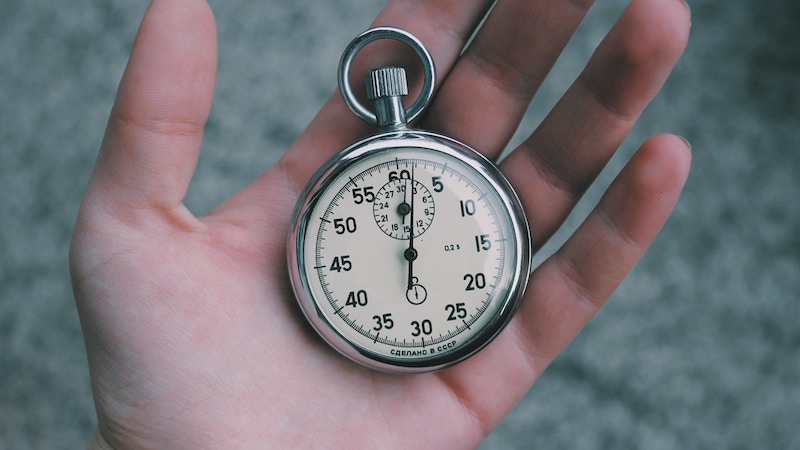Master Your Blocks: The Ultradian Limit
Episode #3 of the course Master your time: The secret to being insanely productive by John Robin
Welcome back! I hope you’ve been practicing more focused work, with short breaks in between.
You might have noticed a problem, which is exactly what we’re going to talk about today:
Just how long can you keep going?
Forever, right? From sunup to sundown?
If you try alternating 25-minute focus periods with short breaks several times, you might notice the following: After about four to five times of doing this, every time that break timer tells you to dive back in for 25 more minutes, you want to throw your phone out the window.
Today, we’re going to talk about why that is and how to get around it.
The Ultradian Rhythm
When you sleep at night, you typically go through cycles. These last 90-100 minutes.
These biorhythms are fundamental to how our circadian clock processes time, a shorter cycle within the 24-hour rhythm of the day.
These cycles are called ultradian rhythms. Interestingly, when conducting research on attention span, scientists have found that focus dwindles dramatically at about the 90-100-minute mark. No exact connection has been shown between this timing and ultradian rhythms of sleep cycles, but the coincidence is uncanny!
We can use this ultradian rhythm to calculate our maximum potential.
Let’s say yours is exactly 90 minutes. In 24 hours, you have 16 cycles of this fundamental ultradian rhythm.
Let’s say you sleep nine hours/night. This means you spend six ultradian cycles asleep, leaving you with ten to harvest for your workday.
There’s your maximum potential (at nine hours of sleep):
• 10 ultradian cycles
• 3 x 10 = 30 focused periods of 25 minutes (assume that each cycle, you have 15 minutes of break time total)
• 30 x 25 = 750 minutes of focused work
Wouldn’t that be great: 12.5 hours of productivity every day!
In reality, you’ll get less than half of that. Most likely, you’ll only get around a third, in fact.
For example, the Pomodoro Technique, which I mentioned yesterday, recommends the following recipe:
Block 1
• 25 minutes of focused work
• 5-minute break
• 25 minutes of focused work
• 5-minute break
• 25 minutes of focused work
• 5-minute break
• 25 minutes of focused work
• 30-minute break
Block 2
• 25 minutes of focused work
• 5-minute break
• 25 minutes of focused work
• 5-minute break
• 25 minutes of focused work
• 5-minute break
• 25 minutes of focused work
• 30-minute break
Block 3
• 25 minutes of focused work
• 5-minute break
• 25 minutes of focused work
That gives you a total of four hours, ten minutes, of focused work, spanning six hours and five minutes.
You’ll get ten 25-minute periods of completed work.
Master Your Blocks
You might feel you can do much more than this, and you’re right, to some extent.
What I want you to notice is how the Pomodoro Technique uses the ultradian rhythm to “block” together focused work periods, and you can do likewise:
• Block together three to four of your 25-minute work periods.
• Take a longer break between these blocks (15-30 minutes).
• Aim for three to five of these blocks a day.
We’ll talk more about exactly what to aim for each day, as we get deeper into the course, but for now, it’s good for you to play with these limits. Experiment and see how you do!
The main principle to follow is to observe your ultradian rhythm and try to block three to four focused work periods together, then break up your day so you refresh between each block.
Research has shown that walking and changing location helps us learn and concentrate better between ultradian periods. Think of this as incorporating a BIG BREAK to complement your little breaks of 1-5 minutes between each focused period of 25 minutes. When you hit this BIG BREAK, take a walk, change location, eat a small meal, or do some exercise. Reset, then begin fresh for three to four more periods of 25-minute focus.
Takeaway
As much as you might wish you could keep going and going, science has shown that our attention tapers off after 90-100 minutes of steady focus. You can make the most of this by blocking your 25-minute focus periods into groups of three or four, then changing location/taking a longer break to power down and do a second block of this pattern and possibly a third.
Or what about a fourth or a fifth? How far can we go exactly?
Your homework today is to try at least two blocks of these. If you’re feeling ambitious, try the exact Pomodoro formula given above.
Tomorrow, we’ll be talking about just how far we can push the limits to get the most out of each work day.
Recommended book
The Four-Hour Work Week by Tim Ferriss
Share with friends

